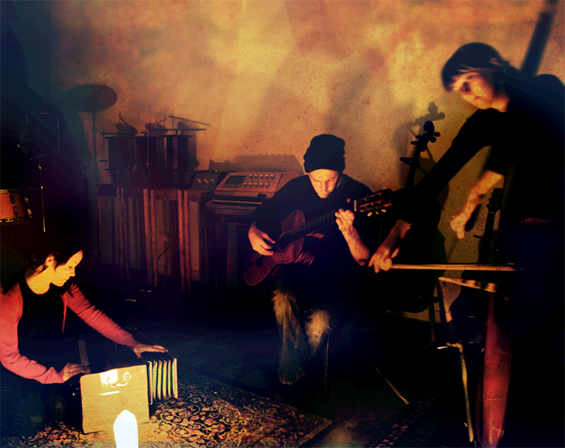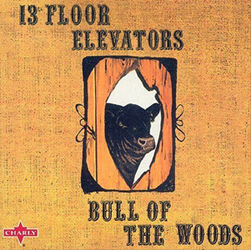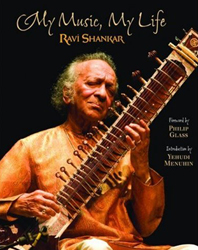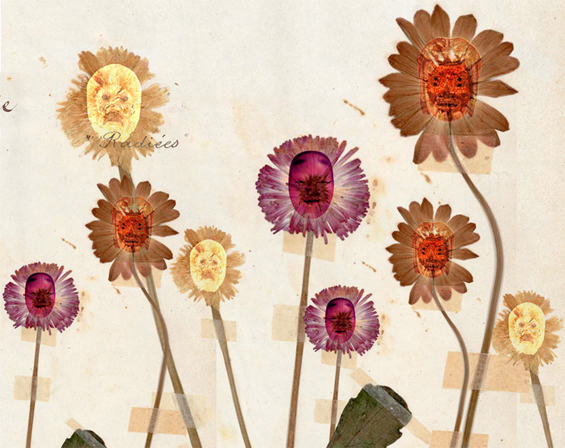

THE LICKETS' TEN RANDOM MYSTERY FLAVOURS
The Lickets, an American experimental-folk outfit based in San Francisco, culitvates such an air of mystery that clear photos of the trio are a rare thing indeed. So we were delighted when multi-instrumentalists Lena Buell, Mitch Greer, and Rachel Smith not only provided us with a rare glimpse of The Lickets at work but also composed a predictably idiosyncratic article for this month's issue; in their own words, the article is not a top ten per se but rather "a few things we like in no particular order and limited to ten." The trio's currently celebrating the simultaneous release of two superb albums, Her Name Came On Arrows and They Turned Our Desert Into Fire (both on International Corporation / Gandhara), that collectively make the most powerful argument to date for their transporting brand of psychedelic music-making. What follows offers ample insight into the minds responsible for such sonic wizardry.
1. The Tomorrow People: The Original Television Soundtrack (Trunk Records, 1969)
As kids, we really didn't get it. Basically, it just made sure from the opening that we knew that there was a relationship between our hands, an opening flower, a disembodied eye, and a series of minimalist grids to a moog soundtrack. Now we know it was a model for being in a band: unusual transportation, secret bases, telepathy, and avoiding floating orbs.
2. Brigitte Fontaine, Areski Belkacem and The Art Ensemble of Chicago: Comme à la Radio (Saravah,1970)
All of it.
3. Tony Conrad at the San Francisco Art Institute (Sat., April 4, 2009)
This was the best show we saw this year. It sounded kind of like this.
4. Shirley Collins and the Albion Country Band: “Murder of Maria Marten,” No Roses (Pegasus Records, 1971)
Shirley Collins sounds in this song like she's about to scream if that is at all possible. Then it stops in the middle, unexpectedly, from a Liege and Leaf Fairport Convention Folk/Rock hybrid to just a hurdy gurdy drone. It stays that way for awhile, and then goes back to the four-piece rock band. It's the only example we can think of of a dirge solo in a 1970s rock song. It's strange and amazing.
5. Nausicaa na na nana
Nausicaa is the princess of a wind-powered kingdom who is the only one that knows a giant toxic jungle of spores—threatening to engulf all that is left of humanity after an apocalyptic destruction of hybrid techno-humanoid giants called God Warriors—is a cleansing force that will save the Earth because she can sense and communicate through empathy with giant insects covered in thousands of eyes called Ohmu. This is her theme song.

6. 13th Floor Elevators: Bull of the Woods (International Artists, 1968)
It baffles why this album has been so badly criticized for its production values, sloppiness, and lack of Roky Erikson's input. This is a fitting final album for 1960s-period 13th Floor Elevators with a quintessential Texas feel, and the poor production values really make it an incredible listen, not to mention the album cover's graphic which shows that the bull of the woods actually lives inside of a tree.
7. Oum Kalthoum Improvisation
In this clip, as the audience encourages her, Oum Kalthoum re-approaches a lyric, slowly changing it until it's just ecstatic emotion, melody, and two words.
8. Barong Ket
Who wouldn't like Barong Ket? Gamelan music goes wherever he goes, and he helps to keep the world in cosmic balance.

9. Experimental Musical Instruments Website
A great resource. Worthwhile alone for the entire Experimental Musical Instruments Journal (1985-1999) available on CD-ROM.

10. Ravi Shankar: My Music, My Life (Simon and Schuster, 1969)
Ravi Shankar's autobiography has a history of Indian classical music (both Hindustani and Carnatic), a brief instruction on the sitar, personal observations, and some photos—a really great introduction.

October 2009
![]()